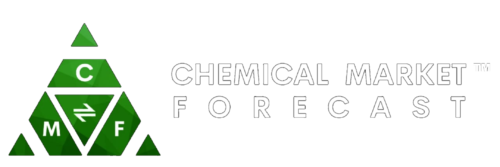Global Composites Market Report
The global composite market refers to the market for composite materials, which are made up of two or more different components. The market is driven by the increasing demand for high-strength, lightweight, and durable materials in various industries, such as aerospace, construction, and transportation. There are two main types of composites: reinforced composites and particle-reinforced composites. Reinforced composites consist of a matrix material (such as polymer, metal, or ceramics) that is reinforced with fibers, such as carbon or glass fibers. Particle-reinforced composites consist of a matrix material that is reinforced with particles, such as ceramic or metal particles.
The global composite market is expected to grow in the coming years due to increasing demand for composites in various end-use industries and the growing demand for sustainable and environmentally friendly materials. The growth of the aerospace industry, particularly the demand for lightweight and fuel-efficient aircraft, is expected to drive the demand for composites in the coming years.
Despite the many benefits and widespread use of composites, there are also several challenges associated with their production and use. Some of the main challenges include: Environmental impact: The production of composites often involves the use of hazardous chemicals and resins, which can have negative impacts on the environment. There is also a challenge in disposing of composite materials, as they are often not biodegradable. Quality control: Maintaining the quality and consistency of composites during production can be challenging, as the properties of the final material depend on the properties of the individual components and the processing conditions.
Some of the most common raw materials used in the production of composites include: Reinforcement fibers: These are the fibers that provide the strength and stability of the composite material. The most common reinforcement fibers used in composites include glass fibers, carbon fibers, and aramid fibers. Resins: Resins are the binding agents that hold the reinforcement fibers together to form the composite material. The most common resins used in composites include epoxy, polyester, and vinyl ester resins. Fillers: Fillers are added to composites to improve specific properties, such as thermal conductivity, electrical conductivity, and dimensional stability. Fillers can include materials such as talc, clay, and mica. Additives: Additives are added to composites to improve specific properties, such as flame resistance, UV stability, and color stability. Additives can include materials such as pigments, flame retardants, and stabilizers.
Key players in the global composite market include companies specializing in the production and distribution of composite materials, as well as large corporations with a presence in multiple industries. Some of the major players in the market include Toray Industries, Inc., Teijin Limited, Owens Corning, Solvay S.A., and Hexcel Corporation. The global composite market is highly competitive and is characterized by the presence of several large players and a large number of small and medium-sized enterprises. Companies in the market are investing in research and development to develop new and innovative composites and to meet the changing demands of the market.
Overall, the global composite market is a rapidly growing market that is driven by the increasing demand for high-strength, lightweight, and durable materials in various industries.
Table of Contents
Global Composites Market Report
1 Market Introduction of Global Composites Market Report
2 Market Segmentation of Composites Market Report
2.1 Composite Market Segmentation By Region
2.2 Composite Market Segmentation By Type
2.3 Composite Market Segmentation By Crop Type
3 Cost Structure of Global Composites Market Report
4 Country Analysis of Global Composite Market Report
4.1 China
4.1.1 Composite Market Size in China
4.1.2 Composite Market Trends & Analysis in China
4.1.3 Key Composite companies in China
4.1.4 Regulatory Framework of Composite Market in China
4.2 Germany
4.2.1 Composite Market Size in Germany
4.2.2 Composite Market Trends & Analysis in Germany
4.2.3 Key Composite companies in Germany
4.2.4 Regulatory Framework of Composite Market in Germany
4.3 France
4.3.1 Composite Market Size in France
4.3.2 Composite Market Trends & Analysis in France
4.3.3 Key Composite companies in France
4.3.4 Regulatory Framework of Composite Market in France
4.4 Italy
4.4.1 Composite Market Size in Italy
4.4.2 Composite Market Trends & Analysis in Italy
4.4.3 Key Composite companies in Italy
4.4.4 Regulatory Framework of Composite Market in Italy
4.5 Netherland
4.5.1 Composite Market Size in Netherland
4.5.2 Composite Market Trends & Analysis in Netherland
4.5.3 Key Composite companies in Netherland
4.5.4 Regulatory Framework of Composite Market in Netherland
4.6 Russia
4.6.1 Composite Market Size in Russia
4.6.2 Composite Market Trends & Analysis in Russia
4.6.3 Key Composite companies in Russia
4.6.4 Regulatory Framework of Composite Market in Russia
4.7 Canada
4.7.1 Composite Market Size in Canada
4.7.2 Composite Market Trends & Analysis in Canada
4.7.3 Key Composite companies in Canada
4.7.4 Regulatory Framework of Composite Market in Canada
4.8 Mexico
4.8.1 Composite Market Size in Mexico
4.8.2 Composite Market Trends & Analysis in Mexico
4.8.3 Key Composite companies in Mexico
4.8.4 Regulatory Framework of Composite Market in Mexico
4.9 Singapore
4.9.1 Composite Market Size in Singapore
4.9.2 Composite Market Trends & Analysis in Singapore
4.9.3 Key Composite companies in Singapore
4.9.4 Regulatory Framework of Composite Market in Singapore
4.10 United Kingdom
4.10.1 Composite Market Size in United Kingdom
4.10.2 Composite Market Trends & Analysis in United Kingdom
4.10.3 Key Composite companies in United Kingdom
4.10.4 Regulatory Framework of Composite Market in United Kingdom
4.11 Switzerland
4.11.1 Market Size in Switzerland
4.11.2 Market Trends & Analysis in Switzerland
4.11.3 Key Composite companies in Switzerland
4.11.4 Regulatory Framework of Composite Market in Switzerland
4.12 Brazil
4.12.1 Market Size in Brazil
4.12.2 Market Trends & Analysis in Brazil
4.12.3 Key Composite companies in Brazil
4.12.4 Regulatory Framework of Composite Market in Brazil
4.13 USA
4.13.1 Market Size in US
4.13.2 Market Trends & Analysis in US
4.13.3 Key Composite companies in US
4.13.4 Regulatory Framework of Composite Market in US
4.14 Japan
4.14.1 Market Size in Japan
4.14.2 Market Trends & Analysis in Japan
4.14.3 Key Composite companies in Japan
4.14.4 Regulatory Framework of Composite Market in Japan
4.15 South Korea
4.15.1 Market Size in South Korea
4.15.2 Market Trends & Analysis in South Korea
4.15.3 Key Composite companies in South Korea
4.15.4 Regulatory Framework of Composite Market in South Korea
4.16 India
4.16.1 Market Size in India
4.16.2 Market Trends & Analysis in India
4.16.3 Key Composite companies in India
4.16.4 Regulatory Framework of Composite Market in India
4.17 Thailand
4.17.1 Market Size in Thailand
4.17.2 Market Trends & Analysis in Thailand
4.17.3 Key Composite companies in Thailand
4.17.4 Regulatory Framework of Composite Market in Thailand
4.18 Russia
4.18.1 Market Size in Russia
4.18.2 Market Trends & Analysis in Russia
4.18.3 Key Composite companies in Russia
4.18.4 Regulatory Framework of Composite Market in Russia
4.19 Malaysia
4.19.1 Market Size in Malaysia
4.19.2 Market Trends & Analysis in Malaysia
4.19.3 Key Composite companies in Malaysia
4.19.4 Regulatory Framework of Composite Market in Malaysia
4.20 Saudi Arabia
4.20.1 Market Size in Saudi Arabia
4.20.2 Market Trends & Analysis in Saudi Arabia
4.20.3 Key Composite companies in Saudi Arabia
4.20.4 Regulatory Framework of Composite Market in Saudi Arabia
5 Composite Market Trends
5.1 Composite Market Trends- Key Drivers
5.2 Composite Market Trends- Key Restraints
5.3 Composite Market Trends- Key Challenges
5.4 Porter’s Five Forces Analysis of Composite Market
5.5 PEST Analysis- Composite Market
6 Composites Market Forecast
6.1 Composites Market Forecast By Region
6.1.1 North America
6.1.2 Europe
6.1.3 APAC
6.1.4 Middle East
6.1.5 ROW
6.2 Composites Market Forecast By Type
6.2.1 Fertilizer
6.2.2 Pesticide
6.3 Composites Market Forecast By Crop Type
6.3.1 Fruits & Vegetables
6.3.2 Oilseed and Pulses
6.3.3 Cereals & Grains
6.3.4 Other
7 Supply Chain of the Composite Market Analysis
8 Opportunity Analysis
9 Scenario Analysis
10 Key Company Profiles
11 Strategic Conclusions – Composites Market Report
12 Abbreviations used in Composites Market Report






Reviews
There are no reviews yet.